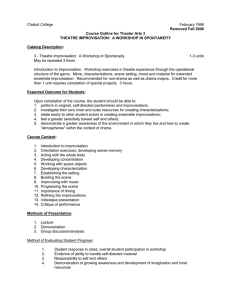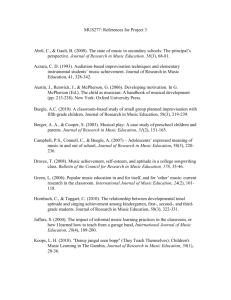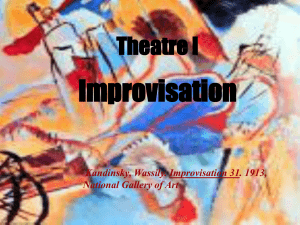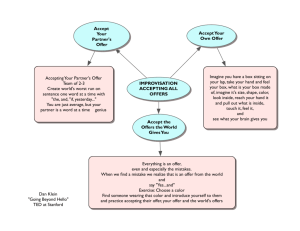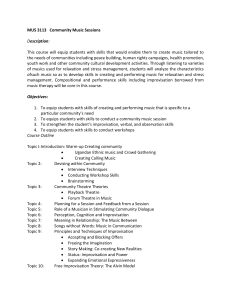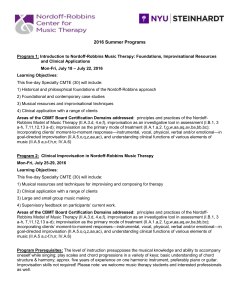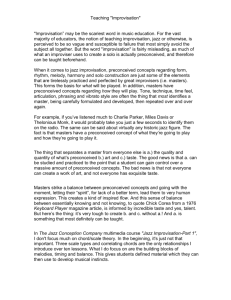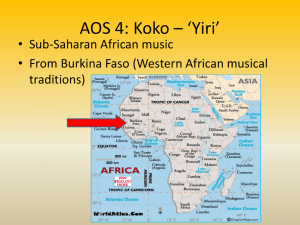Interaction: The Complete Tool Box
advertisement
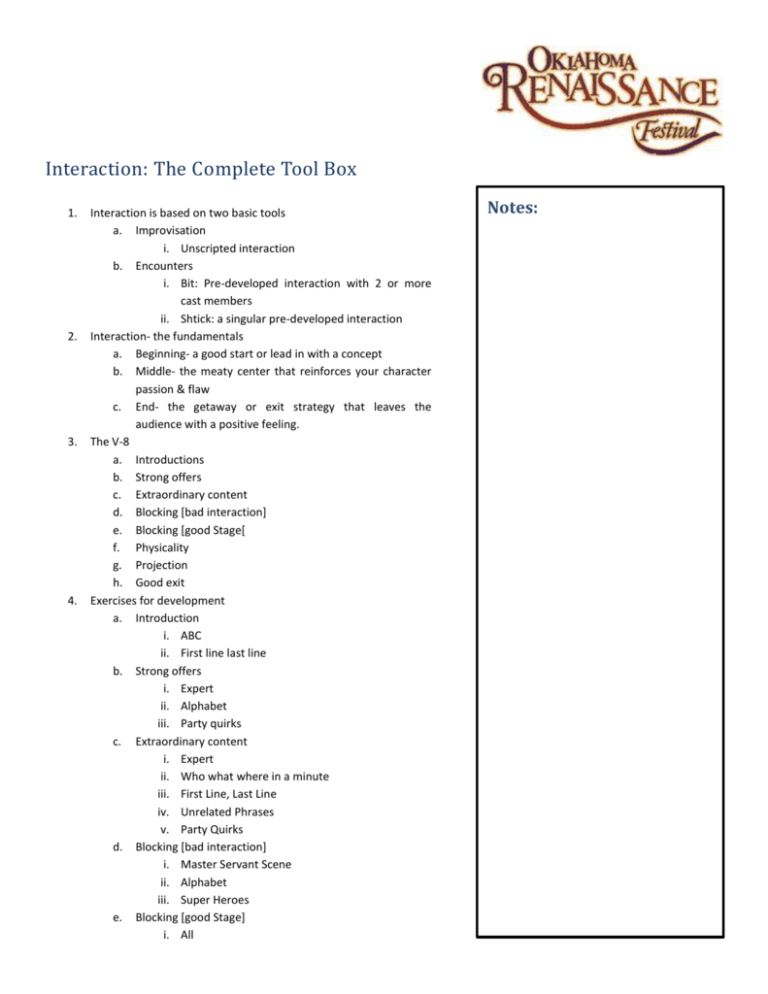
Interaction: The Complete Tool Box 1. 2. 3. 4. Interaction is based on two basic tools a. Improvisation i. Unscripted interaction b. Encounters i. Bit: Pre-developed interaction with 2 or more cast members ii. Shtick: a singular pre-developed interaction Interaction- the fundamentals a. Beginning- a good start or lead in with a concept b. Middle- the meaty center that reinforces your character passion & flaw c. End- the getaway or exit strategy that leaves the audience with a positive feeling. The V-8 a. Introductions b. Strong offers c. Extraordinary content d. Blocking [bad interaction] e. Blocking [good Stage[ f. Physicality g. Projection h. Good exit Exercises for development a. Introduction i. ABC ii. First line last line b. Strong offers i. Expert ii. Alphabet iii. Party quirks c. Extraordinary content i. Expert ii. Who what where in a minute iii. First Line, Last Line iv. Unrelated Phrases v. Party Quirks d. Blocking [bad interaction] i. Master Servant Scene ii. Alphabet iii. Super Heroes e. Blocking [good Stage] i. All Notes: f. 5. 6. Physicality i. Shop Keeper Notes ii. Gestures iii. Scene without Words iv. Party Quirks g. Projection i. All h. Good exit i. ABC Scene Interaction- Improvisations a. Improvisation i. a creation spoken or written or composed extemporaneously ii. an unplanned expedient iii. a performance given extempore without planning or preparation b. Improvisation is the art of Play. c. Improvisation is opening an impromptu conversation with patrons that is driven by the setting and your character. d. Improvisation is working without a net. e. Improvisation is developed through extensive practice of exercises we call IP exercises. i. Each IP is intended to develop different aspects of an interaction and strengthen the ‘wit’ of the performer to fluidly shift with the scene and control the basic direction of the interaction Interaction- Encounters a. An Encounter is a planned or semi planned Interaction. Encounters can be ice breakers to an Improvisation or completely one-sided interaction. b. Encounters can be classified into two sub categories. i. The Shtick- a one person self-contained interaction. ii. The Bit- a two or more person interaction. c. The purpose of an encounter should be: i. Entertain- The interaction is simply intended to build on the elements of the character [Passion/Foible] ii. Educate- The interaction is intended to educate on the history, life or many facets of the life of the environment. iii. Inform- The interaction is intended to inform the guest as to the happenings of the day or events d. Encounter Log e. i. An encounter log is where you list your possible encounters. Each encounter has 4 simple pieces. 1. TITLE: (what do you call this shtick or bit) 2. PREMISE: (The issue or problem to be resolved, and the Character who has the most at stake. How does this relate to their Passion and Primary Need?) 3. ACTION: (Describe the 'here and now' activity that will move the scene forward. How is the Premise always apparent to passersby? How are Character Foibles used? ) 4. CLOSURE: (examine possible outcomes, twists, or comeuppance.) Trix & Tools i. Endowments- An Endowment bestow upon the patron a role to play. ii. Conceitti- Conceitti are short, prewritten monologues designed to display a characters tension or depth. iii. Lazzi- Is a physical a simple action, gesture or phrase that reinforces the extraordinary nature of the character.
